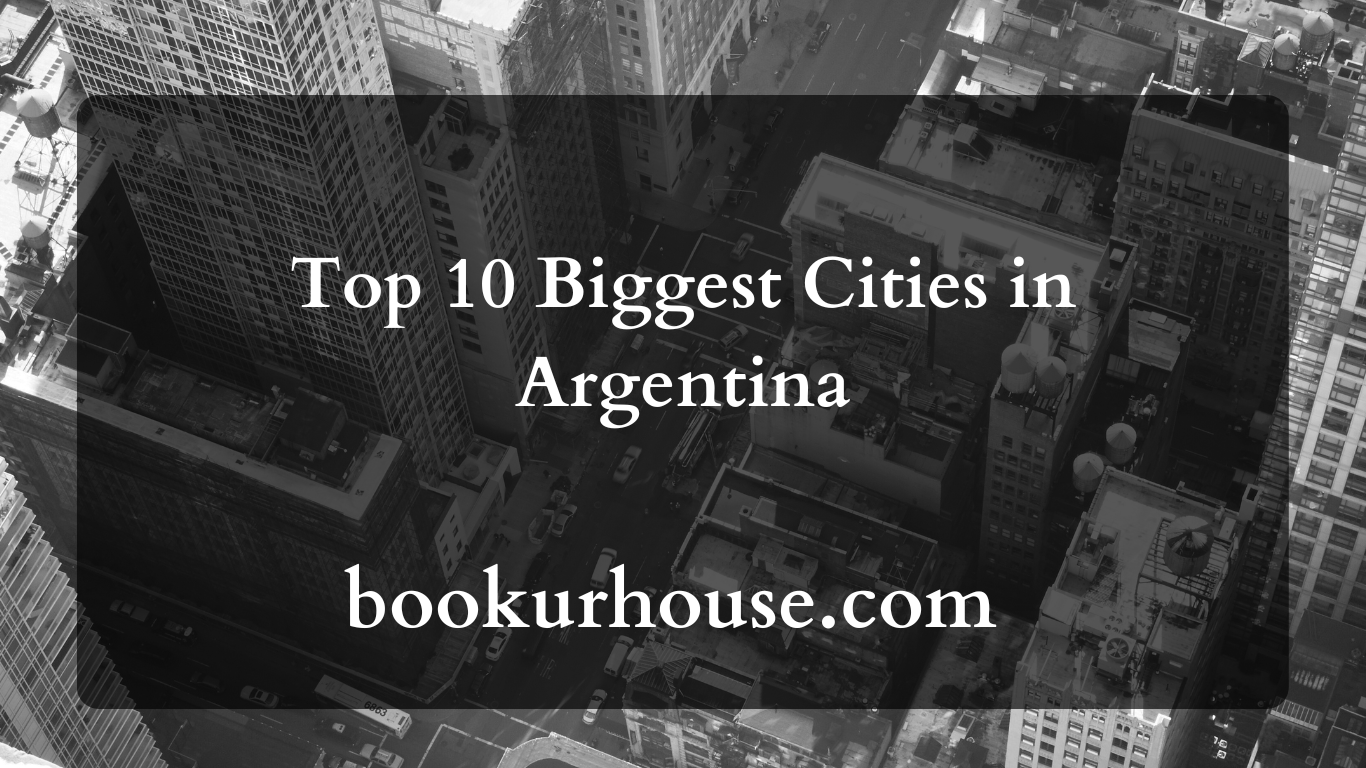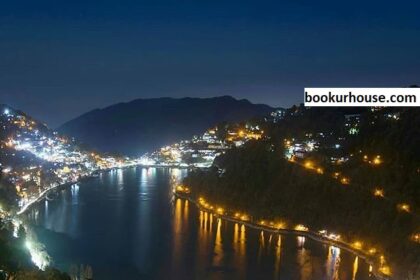Introduction
Argentina, a well-known place known for enthusiasm, tango, and various scenes, is home to some of South America’s most dazzling urban cities. From the middle heart of Buenos Aires to the quiet charm of San Juan, Argentina’s metropolitan scene is an embroidery woven with history, culture, and development. In this thorough article, we set out on an excursion through the Top 10 Biggest Cities in Argentina, each offering its unique mix of experiences and charms.
Here, we are talking about the Top 10 Biggest Cities in Argentina:
Buenos Aires: The Paris of South America
Buenos Aires stands at the pinnacle of Argentina’s metropolitan pecking order, the country’s substantial capital and pulsating heart. With a populace of over 3,000,000, Buenos Aires is a rambling city prestigious for its European-motivated engineering, lively road life, and rich social legacy. The city’s particular neighbors, from the noteworthy cobblestone roads of San Telmo to the painful exteriors of La Boca, offer a brief look into Argentina’s different embroidery of impacts.
At the center of Buenos Aires lies Plaza de Mayo, a noteworthy square saturated with political importance and encompassed by famous visitor spots like the Casa Rosada and the Metropolitan Church building. Guests can free themselves in the exquisite lanes of Recoleta, house to the renowned Recoleta Cemetery and the dazzling Floralis Genérica form. In the interim, the stylish neighborhoods of Palermo and Puerto Madero beat with enthusiasm, flaunting stylish shops, connoisseur eateries, and flourishing nightlife.
Cordoba: Where History Meets Modernity
As Argentina’s second-biggest city, Cordoba oozes a one-of-a-kind mix of provincial appeal and contemporary essentialness. Settled in the core of the Sierras de Cordoba mountain range, this social center point is famous for its UNESCO-recorded Jesuit Block, an assortment of notable structures tracing back to the seventeenth 100 years. Cordoba’s lively expressions scene, powered by its esteemed colleges, adds energy to its noteworthy roads, while its beautiful courts and clamoring markets offer a sample of valid Argentine life.
Rosario: A City of Revolution and Industry
Situated along the banks of the Paraná Stream, Rosario is Argentina’s third-biggest city and has a dynamic focus on trade, industry, and culture. Most famous as the origin of progressive pioneer Che Guevara and home to the famous Monumento a la Bandera, Rosario flawlessly mixes its progressive past with its cutting-edge desires. The city’s waterfront promenade, clamoring markets, and flourishing social scene make it a convincing objective for guests trying to investigate Argentina’s rich history and contemporary energy.
Mendoza: The Heart of Wine Country
Settled in the lower regions of the Andes Mountains, Mendoza is Argentina’s fourth-biggest city and the undisputed capital of the country’s famous wine district. Popular for its Malbec wines and shocking scenes, Mendoza offers guests a unique mix of outdoor experience and culinary enjoyment. From wine samplings and grape plantation visits to climbing in the nearby Aconcagua National Park, Mendoza coaxes voyagers with its inebriating blend of regular magnificence and gastronomic delights.
La Plata: A City of Architectural Splendor
Planned in the late nineteenth 100 years as Argentina’s previously arranged city, La Plata remains the capital of Buenos Aires Territory and the country’s fifth-biggest city. Prestigious for its neoclassical design, extensive parks, and social organizations, La Plata offers guests a quiet retreat from the clamoring roads of Buenos Aires. Features incorporate the staggering Cathedral of La Plata, the Natural History Museum, and the rambling Paseo del Bosque park.
San Miguel de Tucumán: The Cradle of Independence
Arranged in Argentina’s beautiful northwest district, San Miguel de Tucumán holds a unique spot in the country’s experiences as the “Cradle of Independence.” As the capital of Tucumán Territory and Argentina’s 6th biggest city, Tucumán flaunts a rich social legacy, staggering mountain scenes, and energetic metropolitan life. Guests can investigate memorable tourist spots like the Casa de Tucumán, where Argentina’s statement of freedom was endorsed in 1816, or adventure into the encompassing Andean lower regions for outside undertakings.
Mar del Plata: Argentina’s Coastal Gem
Roosted along Argentina’s Atlantic coast, Mar del Plata remains the country’s seventh-biggest city and a dearest ocean-side objective renowned for its immaculate shores, lively nightlife, and social celebrations. Whether absorbing the sun on its brilliant sea shores, walking around the clamoring waterfront promenade, or examining new fish at its prestigious eateries, guests to Mar del Plata will be captivated by its beachfront appeal and festive air.
Salta: Colonial Splendor in the Andes
Settled in the shadow of the Andes Mountains, Salta allures explorers with its pilgrim design, native legacy, and unforgettable scenes. As Argentina’s eighth-biggest city and the capital of the Salta Region, Salta offers a spellbinding mix of history, culture, and regular magnificence. Features incorporate the dazzling pilgrim engineering of its notable community, the beautiful business sectors of San Miguel de Tucumán, and the grand scenes of the nearby Calchaquí Valley.
Santa Fe: Riverside Tranquility
Situated along the banks of the Paraná Waterway, Santa Fe is the capital of Santa Fe Territory and Argentina’s 9th biggest city. With its beguiling pioneer design, pleasant riverfront promenade, and energetic social scene, Santa Fe offers guests a quiet getaway from the rushing about of metropolitan life. From investigating memorable milestones, for example, the Santa Fe Cathedral, to examining territorial treats at its nearby business sectors, Santa Fe welcomes guests to loosen up and submerge themselves in its commonplace appeal.
San Juan: Nature’s Playground
Concealed in Argentina’s picturesque northwest area, San Juan is the capital of the San Juan Region and the country’s 10th biggest city. Known for its grape plantations, olive forests, and brutal scenes, San Juan coaxes guests with its everyday miracles and open-air experiences. Whether investigating the lunar-like scenes of the Ischigualasto Provincial Park, inspecting nearby wines at its eminent grape plantations, or wondering about the superb pinnacles of the Andes Mountains, San Juan offers a horde of encounters for nature lovers and globe-trotters the same.
FAQs
Which city is the capital of Argentina, and what is its population?
Buenos Aires is the capital of Argentina. The city proper has a population of over 3 million, and the Greater Buenos Aires metropolitan area has a population of over 15 million.
What is the second-largest city in Argentina?
Córdoba is the second-largest city in Argentina, with a population of over 1.5 million people in the metropolitan area.
Where is Rosario located, and what is its population?
Rosario is located in the province of Santa Fe, along the Paraná River. It is the third-largest city in Argentina, with a population of over 1.3 million people.
What is the population of Mendoza, and what is it known for?
Mendoza, located in the foothills of the Andes Mountains, has a population of over 1 million people. It is renowned for its wine production and beautiful landscapes.
Which city is known as the “Garden City,” and why?
La Plata is often called the “Garden City” due to its numerous parks, tree-lined streets, and green spaces.
What is the population of Mar del Plata, and what is it famous for?
Mar del Plata, located on the Atlantic coast, has over 600,000 people. It is a popular tourist destination known for its beaches and vibrant nightlife.
Where is Salta located, and what is its population?
Salta is located northwest of Argentina, in the foothills of the Andes Mountains. It has over 600,000 people and is known for its colonial architecture and scenic landscapes.
What is the population of Santa Fe, and what is it known for?
Santa Fe, located along the Paraná River, has over 500,000 people. It is known for its historic architecture, cultural attractions, and riverfront promenade.
Where is San Juan located, and what is its population?
San Juan is located in the west of Argentina, in the foothills of the Andes Mountains. It has over 400,000 people and is known for its wine production and natural beauty.
Conclusion
From the cosmopolitan energy of Buenos Aires to the peaceful scenes of San Juan, Argentina’s ten central urban communities offer a kaleidoscope of encounters for voyagers to investigate. Whether you’re attracted to the rich history of pilgrim towns, the lively culture of clamoring cities, or the regular magnificence of mountain scenes and seaside withdraws, Argentina’s urban communities are enticed with their novel charms and warm friendliness. As you set out on your excursion through Argentina, permit yourself to be enraptured by the country’s metropolitan magnificence, submerging yourself in the rich embroidered artwork of history, culture, and advancement that characterizes every city on this rundown.












